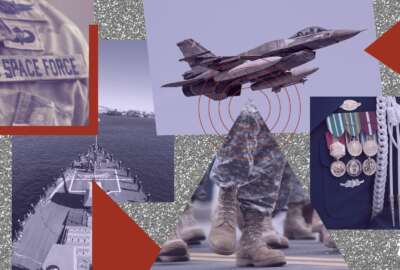Smaller force means Army will overhaul its strategy for producing combat-ready troops
The Army Force Generation process is on its way out - apparently as a casualty of reduced force structure.
The Army Force Generation process, more commonly known to acronym aficionados as ARFORGEN, is on its way out — apparently as a casualty of reduced force structure.
The change is significant. ARFORGEN has been the main underpinning of how the Army thinks about how its soldiers should train, deploy and return home since it was first implemented in 2006. ARFORGEN organized the service into a tiered readiness cycle made up of three “pools” of forces, units that were fully ready to deploy, those who were actively training as units, bringing in new personnel and integrating new equipment and units that had just returned from combat and were reintegrating with their families and catching up on individual training and education.
That last phase of ARFORGEN named above, known as the “reset” phase, will be lopped off in favor of a new two-phase system that Army officials are still designing, said Maj. Gen. Gary Cheek, the Army’s assistant deputy chief of staff for operations and plans (G-3/5/7).
“It’s not really desirable. In many ways, it was a good feature for soldiers returning from conflict to have a period of reset and then rebuild that unit toward the next mission,” Cheek told the annual Army IT day hosted by AFCEA Northern Virginia last week. “It worked well for our conflicts in Iraq and Afghanistan when we had a very high demand for forces, but it’s just not practical for us to maintain a reset period with a much smaller army and many fewer brigade combat teams.”
To supplant ARFORGEN, Army is working on what Cheek termed a “sustainable readiness model.” It’s still a work in progress, he cautioned, but the end result will probably resemble what the Army used before it introduced ARFORGEN, compressing the reset and training periods into a single, shorter phase.
“For people who remember the Army of the 1990s, it’s probably going to look a lot like that,” Cheek said. “We’re going to charge our commanders to do the best they can to keep their readiness as high as they can throughout the period. When they return from a deployment, we may see a drop in readiness, but our expectation is that those commanders will get after it as fast as they can.”
The changes are mostly driven by the constraints declining budgets have placed on the Army’s size. Leaders are currently holding “listening sessions” at bases around the country as they draw up plans to reshape their force structure into smaller, lighter formations. The Army is already planning to draw down to a size of 450,000 soldiers by fiscal 2017 — 40,000 fewer than it will have at the end of this year.
But since virtually all of those reductions will come from bases in the continental U.S., the Army is convening the community meetings with the going-in prospect that the budget outcome over the next several years will be on the darker side of all the possible scenarios; sequestration will continue in full force for several more years, and the Army will have to shrink to 420,000 troops.
“We don’t want to have to go back and do this all over again,” Cheek said.
Copyright © 2025 Federal News Network. All rights reserved. This website is not intended for users located within the European Economic Area.
Jared Serbu is deputy editor of Federal News Network and reports on the Defense Department’s contracting, legislative, workforce and IT issues.
Follow @jserbuWFED






